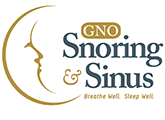Get to Know Us Better!
Patient Testimonials
Sleep Apnea
Nasal Obstruction
Nasal obstruction can cause significant resistance to CPAP airflow, making it very difficult to tolerate. Despite using nasal steroid sprays, decongestants, antihistamines, many patients do not achieve relief from their nasal obstruction. The culprit is often times large inferior turbinates – causing blockage of nasal airflow along the nasal floor.
In-Office procedures are available to provide effective relief. Inferior turbinate reduction can effectively decrease the size of the inferior turbinate – promoting improved nasal airflow and breathing.
Please visit our inferior turbinate reduction page to learn more.
Palatal Obstruction
Patients with mild sleep apnea often times have obstructions occurring at the palatal region. This area includes the soft palate and uvula. As a result, this tissue can fall back during sleep – effectively blocking the path for airflow.
In-Office procedures are available to reduce the tendency for this tissue to provide obstructions by making it less pliable using radiofrequency technology. A probe is inserted at multiple points along the palate and uvula to provide enhanced scarring of this structure. This preserves its function in swallowing and speech, but decreases its tendency to create obstructions during sleep – promoting proper retropalatal airflow.
Lingual Obstruction
The most under-diagnosed component of airway obstruction during sleep apnea rests at the level of the base of tongue. This structure is important in swallowing as it contributes to moving food downwards into the GI tract. However, while asleep, this structure can relax and fall backwards – causing total airway obstruction. Furthermore, large lingual tonsil tissue can rest on the back of the tongue as well. This can also contribute to airway obstruction while sleeping in a similar manner.
Patients suffering from this will experience a sudden awakening at night, gasping for air. For those witnessing a loved one experiencing retro-lingual obstruction – it appears as if they are choking. For those patients that are overweight or obese, retro-lingual obstruction plays a larger role in contributing to sleep apnea.
In-Office procedures are available to treat retro-lingual obstruction. Lingual tonsillectomy or base of tongue reduction, both using radiofrequency technology, can be performed to improve the patency of the retro-lingual airway. This can provide improved airflow and improved tolerance of CPAP therapy.
Please visit our base of tongue reduction page to learn more.

Read Our Blog
Video Library
Testimonials
Office Hours
- MON – FRI 8:00 AM – 5:00 PM
- SAT – SUN CLOSED
Contact Details
- (770) 427-0368
- info@nw-ent.com
- Atlanta – Canton – Cartersville – Marietta – Woodstock
